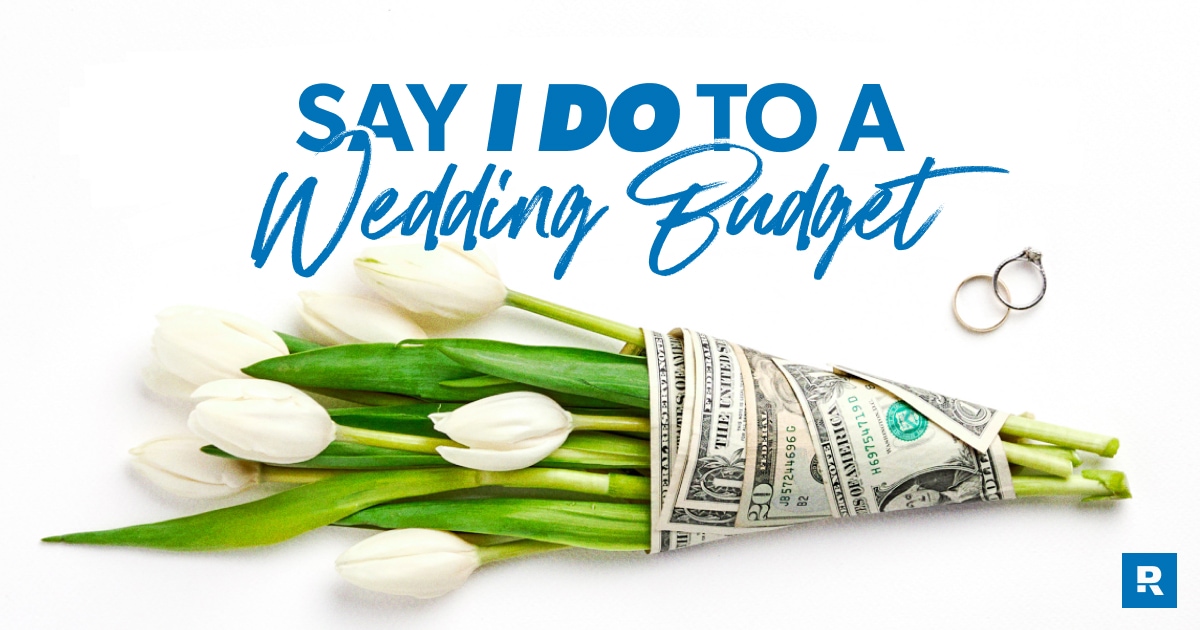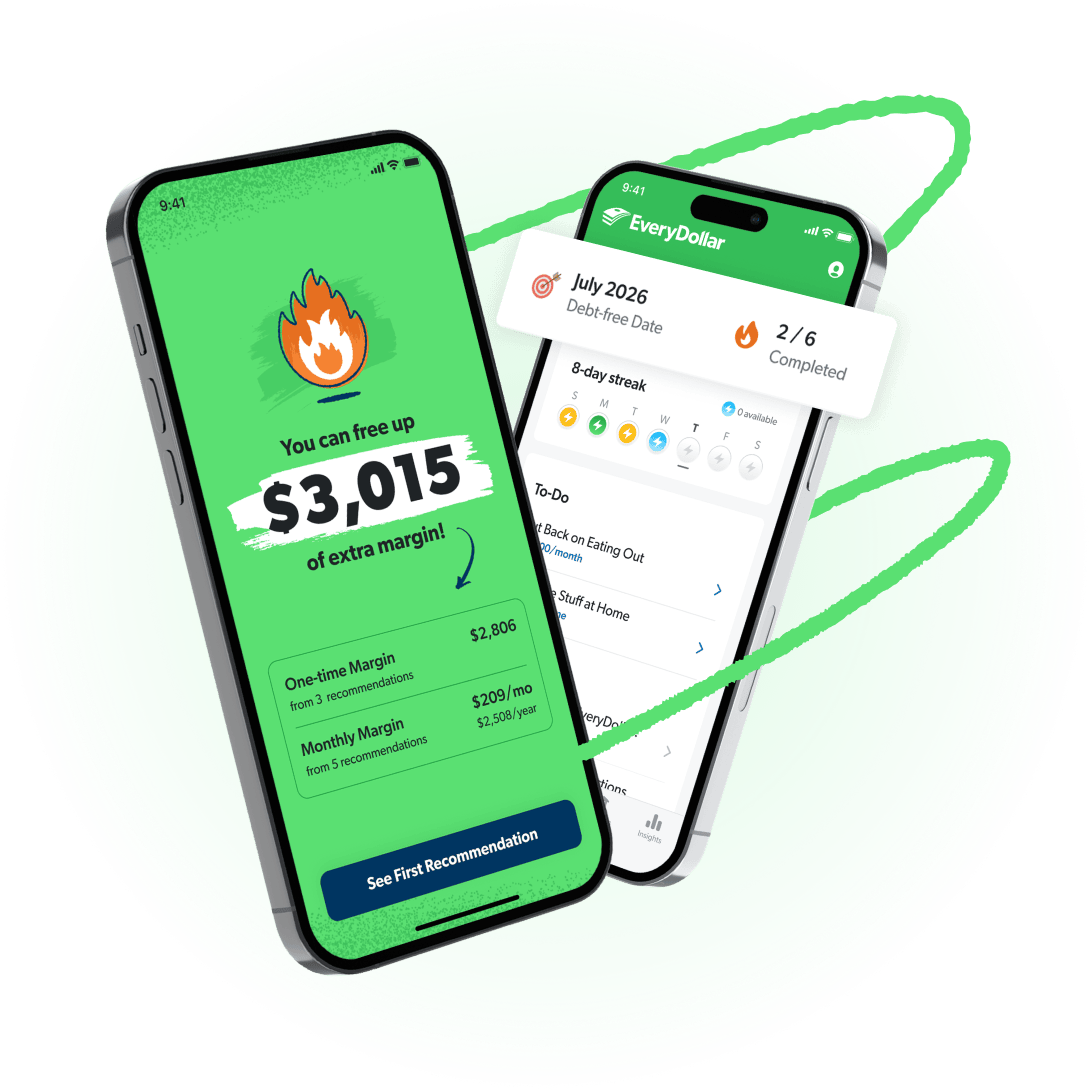Your wedding will be one of the most memorable and special days of your life. But first, you’ve got some planning to do. Where do you start? With the wedding budget! (Always with the budget.)
Let’s walk through how to create a wedding budget that marries your dreams and your bank account—and helps you keep both on the path to happily ever after.
How to Create Your Wedding Budget
If “wedding budget” doesn’t sound romantic to you, make it romantic! Lay out the charcuterie, turn up the love songs playlist, and make this a date night. Then print out our wedding budget template, sharpen your pencils, and start filling it out—together—following these steps:
1. Write down what you’ve saved already.
As a couple, what do you already have saved up for all the upcoming wedding costs? Jot down that number.
For some perspective, the average wedding costs $30,000, with an extra $5,100 if you tack on the honeymoon expenses.1,2 This does not mean you have to spend that much at all. Remember that!
Get expert money advice to reach your money goals faster!
Now, as you look at what you’ve already saved, you might be perfectly content with this amount, or you might be eager to work on the next two steps to get that number higher. No matter what, keep reading.
Free Up Margin. Make Real Progress.
The EveryDollar budget app helps you find hidden margin and put it to work so you can stack savings, crush debt, and build wealth that lasts.
2. Write down how much extra you know you’ll get from family.
It used to be that etiquette told us exactly what roles the parents of the bride and groom played—including who paid for what. But this is 2023!
These days, the average couple pays for about half (49%) of the wedding costs.3 Why? Maybe it’s because couples wait later to marry (the average age is 32) and they’re expected to have their personal finances in a decent place.4
Now, it’s possible your parents opened up the financial conversation the moment you showed them that shiny new engagement ring. If not, you need to open up those lines of communication yourself.
Just make sure you don’t assume your parents will cover 51% of your costs—or any amount, really! Be thankful and content no matter what.
Here's A Tip
Use our Wedding Budget Calculator to estimate your wedding costs and keep your spending on track for the big day!
3. Write down how much extra you can make before your wedding day.
After you’ve filled in what you’ve already saved and any extra your family will contribute, you still have another option for upping your wedding budget.
Before I share, keep this in mind: This shouldn’t be about impressing anyone or living up to a standard you’ve seen in the world. But if you honestly want to spend more on your wedding and you can do that without sacrificing your other money goals—you aren’t stuck at the amounts you’ve already written down on your lovely wedding budget template. You can increase your income and put that extra money into your wedding budget!
Yes, it’ll take some work—but with that extra cash, you can totally book that extra night (and the ziplining package!) at your all-inclusive resort for the honeymoon. Worth. It.
4. Pick your top three nonnegotiables.
It’s time to dream together. Talk about your big vision for the big day. Bring up any ideas you want. Then narrow things down and come up with three (shared) nonnegotiables. These are your top three most important wedding dreams!
I have no idea what’ll be on your list: food, flowers and photography? A big guest list, live band and restored barn for the venue? The sky isn’t even the limit if you dream of releasing live doves.
After you pick, write down your top three nonnegotiables on the front of the wedding budget template. Then you can put a star (or heart!) beside them on the second page. (Fill in a blank spot if it’s not already on the sheet.) And anything that doesn’t matter at all—cross it off!
This will help you keep your most and least valuable dreams at the top of your minds as you keep working on your wedding budget.
5. Research and write in estimated wedding costs.
Now that you know how much you can spend, it’s time to plan how you’ll spend it. Do your research and fill in your wedding budget template—starting with your top three nonnegotiables and covering the less important wedding costs after those most important ones.
I created a quick list of national averages and percentages. Remember, you might spend more (or less) on the nonnegotiables. Just make sure it all evens out so you don’t end up spending more than you have.
Wedding Budget Averages and Percentages:
|
Wedding Budget Item |
Percentage |
National Average Cost |
|
Cake |
1–2% |
$510 |
|
Drinks |
4–7% |
$2,300* |
|
Flowers, lighting and décor |
8–10% |
$3,900* |
|
Food |
20–25% |
$8,775 |
|
Gifts and favors |
1–2% |
$400* |
|
Groom’s attire |
1% |
$290 |
|
Hair and makeup |
1% |
$250 |
|
Honeymoon |
13–15% |
$5,100 |
|
Marriage License |
1% |
$10–110* |
|
Music |
4–11% |
$1,500–3,700* |
|
Officiant |
1% |
$250* |
|
Paperwork |
1% |
$26–241* |
|
Photography and videography |
8–12% |
$4,400* |
|
Rehearsal dinner |
4–5% |
$1,900* |
|
Stationery |
1–2% |
$560* |
|
Transportation |
1–2% |
$800* |
|
Venue |
28–32% |
$11,200 |
|
Wedding bands |
3–6% |
$2,200* |
|
Wedding dress |
3–5% |
$1,900 |
|
Wedding planner |
2–4% |
$1,500* |
Most sources are from The Knot.5,6 Any numbers with an asterisk are from WeddingWire, U.S. Marriage Laws, or a combo of WeddingWire and The Knot.7,8
And don’t forget to put a little padding in there for anything unexpected that might pop up. Give yourself a couple hundred (at least) in a Miscellaneous line. If you don’t spend it, take it on the honeymoon or put it toward your Baby Steps journey (aka the proven plan for saving money, paying off debt, and building lasting wealth).
6. Make adjustments to the wedding budget if you need to.
When you’re adding up numbers, you might realize you don’t have enough money to cover all the wedding costs you’re planning for. Here are some options for how to create a more budget-friendly wedding if that happens:
- Cut some expenses you can live without.
- Find more budget-friendly vendors.
- Use your best negotiation skills to get better deals.
- Ask friends to offer their talents or time instead of a gift.
- Read my friend George Kamel’s list of wedding saving tips.
Whatever you do, do not take out a wedding loan or put any of these expenses on a credit card. It. Isn’t. Worth. It. And don’t spend every bit of money you have either. Walk down the aisle with money still in savings. Because getting married is about so much more than one day—it’s about your future together.
Wedding Budgets Are Worth It
Maybe all this wedding budget talk still sounds a bit unromantic (even after you set out the charcuterie). But listen, starting your life together by draining a savings account or going into debt to impress yourself, your friends or your family—that’s unromantic and unwise!
Instead, give your wedding budget a realistic number that you can afford while covering everything you want out of your special day. Communicate clearly and constantly together about what’s important and what’s not, and you’re on your way to creating the wedding of your dreams—and setting up a marriage on a solid foundation.
The EveryDollar budget app can help you free up thousands in margin—money you didn’t even know you had—and give you a custom plan to put it to work on crushing debt, stacking savings, and building wealth that actually lasts.
Download EveryDollar for free today and finally make the progress you’ve wanted all along.




